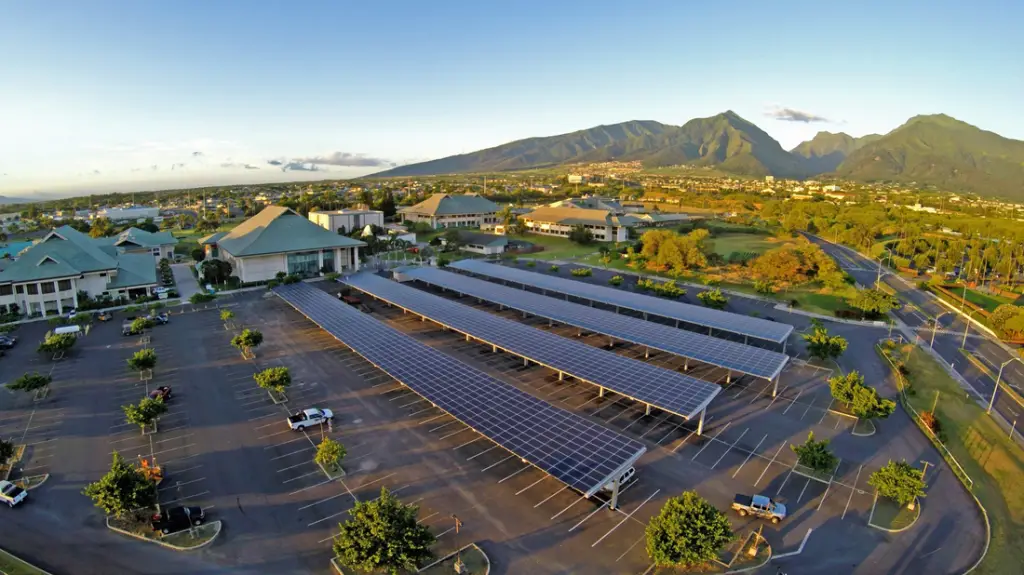According to Building Design and Construction, both the University of Hawaii and the Hawaii Legislature have planned to reduce their fossil fuel consumption levels to “net-zero” by Jan. 1, 2035.
This means that the system hopes to produce “as much renewable energy as it consumes across its campuses.”
Rod Cushing, the president of building solutions for Johnson Controls in North America, said that the University of Hawaii Maui College would most likely be the first campus to supply 100 percent of its energy requirements — 16 years earlier than expected. Maui College plans to achieve this by way of “on-site photovoltaic systems coupled with battery storage.”
Johnson Controls and Pacific Current helped Maui College construct the PV storage system, which will “eliminate the campus’ fossil fuel-based energy use.”
In February 2018, Johnson Controls was awarded a contract to build a solar and battery microgrid for the U.S. Army Garrison Kwajalein in the Marshall Islands. They received $40 million in funding from the United States government under the Energy Savings Performance Contracting scheme.

The project already finished its first phase and is currently in its second phase. The first phase implemented “energy efficiency measures at UH Maui College and across all of UH campuses.”
The second phase will hopefully “reduce the fossil fuel energy consumption across all of the five UH campuses” by roughly 40 gigawatt hours (GWh) annually, which is about 45 percent. This will likely add approximately 13 GWh of renewable energy generation.
Phase two also expects to see the following University of Hawaii Oahu campuses reduce energy consumption by approximately 70-98 percent, depending on the college: Leeward Community College, Honolulu Community College, Kapi’olani Community College and Windward Community College. These improvements are scheduled to be finished by Q2 2019.
University of Hawaii spokesman Michael Unebasami said solar panels will power the 78-acre campus the following year.
Bronte Payne, of the non-profit organization Environment America, said that roughly six continental universities and colleges have already announced commitments to use renewable energy sources, such as Colorado State University, Boston University and Cornell University.
University of Hawaii schools will have to wait until approximately 2035 to see if these energy efficiency measures achieved expectations. However, the duration of that period will show whether the school influenced measures at other schools around the country.
















